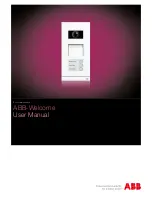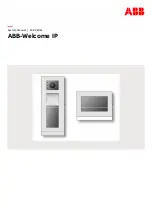
TFP402
Page 3 of 4
Installation
The TYCO RAPID RESPONSE Series
LFII Residential Pendent Sprinklers
(TY1234) must be installed in accor-
dance with this section:
General Instructions
Do not install any bulb-type sprinkler
if the bulb is cracked or there is a loss
of liquid from the bulb. With the sprin-
kler held horizontally, a small air bubble
should be present. The diameter of the
air bubble is approximately 1/16 in.
(1,6 mm).
A leak-tight 1/2 in. NPT sprinkler joint
should be obtained by applying a min-
imum-to-maximum torque of 7 to 14
lb-ft (9,5 to 19,0 N
∙
m). Higher levels
of torque can distort the sprinkler inlet
with consequent leakage or impairment
of the sprinkler.
Do not attempt to compensate for
insufficient adjustment in an Escutch-
eon Plate by under-or over-tightening
the Sprinkler. Re-adjust the position of
the sprinkler fitting to suit.
Residential Sprinkler Design Guide
When conditions exist that are outside
the scope of the provided criteria, refer
to the Residential Pendent Sprinkler
Design Guide TFP490 for the manufac-
turer’s recommendations that may be
acceptable to the local authority having
jurisdiction.
System Type
Only wet pipe systems may be utilized.
Ceiling Types
Smooth flat horizontal, or beamed, or
sloped, in accordance with the 2013
Edition of NFPA 13D, 13R, or 13 as
applicable.
Hydraulic Design
(NFPA 13D and 13R)
The minimum re
quired sprinkler
flow rate for systems designed to
NFPA 13D or NFPA 13R are given in
Table A as a function of temperature
rating and the maximum allowable cov-
erage areas. The sprinkler flow rate is
the minimum required discharge from
each of the total number of design
sprinklers as specified in NFPA 13D or
NFPA 13R.
Hydraulic Design
(NFPA 13)
For systems designed to NFPA 13, the
number of design sprinklers is to be
the four most hydraulically demanding
sprinklers. The minimum required dis-
charge from each of the four sprinklers
is to be the greater of the following:
• The flow rates given in Table A for
NFPA 13D and 13R as a function of
TFP402 temperature rating and the
maximum allowable coverage area.
• A minimum discharge of 0.1
gpm/ft
2
over the “design area”
comprised of the four most hydrau-
lically demanding sprinklers for
actual coverage areas protected by
the four sprinklers.
Obstruction to Water Distribution
Sprinklers are to be located in accor-
dance with the obstruction rules of
NFPA 13D, 13R, and 13 as applica-
ble for residential sprinklers as well as
with the obstruction criteria described
within the TYCO technical data sheet
TFP490.
Operational Sensitivity
Sprinklers are to be installed with
a deflector-to-ceiling distance of
1-1/4 in. to 4 in.
Sprinkler Spacing
The minimum spacing between sprin-
klers is 8 ft (2,4 m). The maximum
spacing between sprinklers cannot
exceed the length of the coverage
area being hydraulically calculated
(for example a maximum of 12 ft for a
12 ft x 12 ft coverage area, or 16 ft for a
16 ft x 16 ft coverage area.) See Table
A.
Max.
Coverage
Area
(a)
ft x ft
(m x m)
WET PIPE SYSTEM
Minimum Flow and Residual Pressure
(b, c)
Ordinary Temp. Rating
155°F (68°C)
Intermediate Temp. Rating
175°F (79°C)
Deflector to
Ceiling
Installation
Type
Minimum
Spacing
ft
(m)
Flow
GPM
(L/min)
Pressure
PSI
(bar)
Flow
GPM
(L/min)
Pressure
PSI
(bar)
12 x 12
(3,7 x 3,7)
8
(30,3)
7.1
(0,49)
8
(30,3)
7.1
(0,49)
Smooth
Ceilings
1-1/4 in. to 4 in.
Beamed
Ceilings per
NFPA 13D
or 13R
1-1/4 in. to
1-3/4 in. below
bottom of
beam.
Recessed
using Style 20
Escutcheon or
non-recessed
per NFPA 13D,
13R, or 13
8
(2,4)
14 x 14
(4,3 x 4,3)
11
(41,6)
13.4
(0,92)
11
(41,6)
13,4
(0,92)
15 x 15
(4,6 x 4,6)
12
(45,4)
16
(1,10)
12
(45,4)
16
(1,10)
16 x 16
(4,9 x 4,9)
13
(49,2)
18.8
(1,29)
13
(49,2)
18.8
(1,29)
18 x 18
(5,5 x 5,5)
17
(64,3)
32,1
(2,21)
18
(68,1)
36.0
(2,48)
Notes:
a. For coverage area dimensions less than or between those indicated, use the minimum required flow for the next highest coverage area for which
hydraulic design criteria are stated.
b. Requirement is based on minimum flow in GPM (LPM) from each sprinkler. The associated residual pressures are calculated using the nominal
K-factor. See Hydraulic Design under the Design Criteria section.
c. For NFPA 13 residential applications, the greater of 0.1 gpm/ft
2
over the design area or the flow in accordance with the criteria in this table must be
used.
TABLE A
WET PIPE SYSTEM
SERIES LFII RESIDENTIAL PENDENT AND RECESSED PENDENT SPRINKLERS (TY1234)
NFPA 13D, 13R, AND 13 HYDRAULIC DESIGN CRITERIA






















